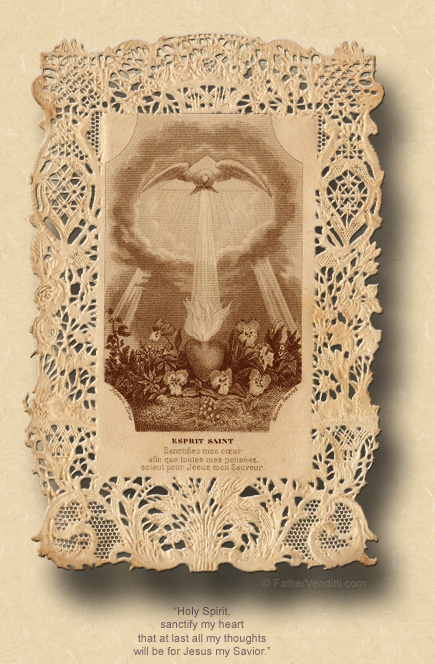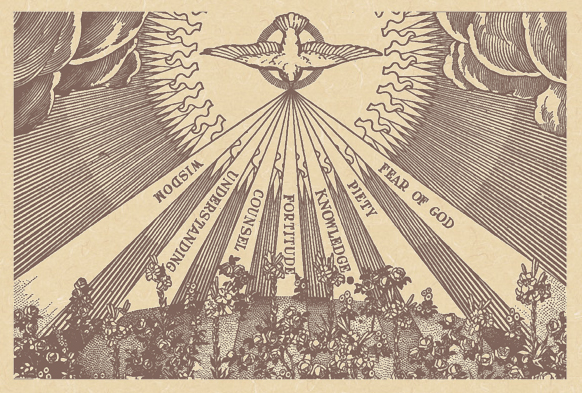But Velveeta Is Real Cheese.
The Sixth Monday of Easter; or, the Memorial of Saint Augustine of Canterbury, Bishop.*
Lessons from the feria, according to the ordinary form of the Roman Rite:
• Acts 16: 11-15.
• Psalm 149: 1-6, 9.
• John 15: 26—16: 4.
|
When a Mass for the memorial is taken, lessons from the feria as above, or from the proper:
• I Thessalonians 2: 2-8.
• Psalm 96: 1-3, 7-8, 10.
• Matthew 9: 35-38.
…or, any lessons from the common of Pastors for Missionaries, or the common Pastors for a Bishop.
|
The Third Class Feast of Saint Bede the Venerable, Confessor & Doctor of the Church; and, the Commemoration of Saint John I, Pope & Martyr.**
Lessons from the common "In médio …" of a Doctor, according to the extraordinary form of the Roman Rite:
• I Peter 5: 1-4, 10-11.
• Psalm 106: 32, 31.
• Matthew 16: 13-19.
|
When a Mass for the commemoration is taken, the lessons are the same.
|
FatherVenditti.com
|
 6:57 AM 5/27/2019 — Allow me, if you will, to repeat the first two verses of today’s Gospel lesson in Msgr. Knox’s most excellent Victorian prose: “Well, when the truth-giving Spirit, who proceeds from the Father, has come to befriend you, he whom I will send to you from the Father’s side, he will bear witness of what I was; and you too are to be my witnesses, you who from the first have been in my company” (John 15: 26-27 Knox). 6:57 AM 5/27/2019 — Allow me, if you will, to repeat the first two verses of today’s Gospel lesson in Msgr. Knox’s most excellent Victorian prose: “Well, when the truth-giving Spirit, who proceeds from the Father, has come to befriend you, he whom I will send to you from the Father’s side, he will bear witness of what I was; and you too are to be my witnesses, you who from the first have been in my company” (John 15: 26-27 Knox).
One of the criticisms of Msgr. Knox’s translation—the New Testament first published in 1945 and the Old Testament ten years later—is that it’s a translation of Saint Jerome’s Latin Vulgate and not made from the original Greek and Hebrew manuscripts like more modern translations. It’s not a fair criticism because Knox, a convert to Catholicism from the Church of England, was probably the most brilliant classical language scholar in history; and, while he did base his translation on the Vulgate, he had all the existing Greek and Hebrew manuscripts at his elbow while he worked, and his translation includes copious footnotes detailing how each manuscript varies on any particular verse, leaving nothing up to chance.
Another reason why this criticism of the Knox Bible is invalid is the simple fact that there is no such thing as an original manuscript of any book of the Bible in any language. It’s a sobering thought, but the simple fact is that all the modern translations of the Bible that are in vogue today that claim to be translations from the “original languages” are flying under false colors, since there may even be a question regarding what was the original language. For example: Saint Papias, a martyr and Father of the Church from the second century, tells us in his writings that he has an original copy of the Gospel of Matthew in the Aramaic language, which was the native language of both Matthew and our Lord, and he quotes from it; but, we have never seen it.  The earliest copy we have of Matthew’s Gospel is in Greek and dated almost a century later, obviously a translation of Matthew’s original Gospel; how accurate a translation it is we’ll never know since the original is long since lost except for the fragments that Papias quotes. The earliest copy we have of Matthew’s Gospel is in Greek and dated almost a century later, obviously a translation of Matthew’s original Gospel; how accurate a translation it is we’ll never know since the original is long since lost except for the fragments that Papias quotes.
When I was studying Greek in the seminary, the standard text was a 1965 edition of the New Testament in Greek, and each page had more footnotes than it had text regarding all the various manuscripts and how they differed regarding various verses, and how which manuscript you chose to believe could completely change the meaning of that verse. [Cf. the image here to view a sample page. I scanned this page of the beginning of John's Gospel because it demonstrates that no translation of the Bible in English captures the true ramification of John's statement that "the Word became flesh and pitched His tent among us," as it relates to the relationship between the Old Testament Tabernacle of Exodus and Leviticus and the incarnation of our Blessed Lord, the idea of the "tent" being absolutely crucial to the true meaning.] To be perfectly blunt and brutal: there is no such thing as a translation from the originals, since the originals don’t exist, anything claimed by the editorial board of the New American Bible notwithstanding.
The point being: Msgr. Knox’s translation of the Vulgate can’t be dismissed as inferior on that basis. His magnificent skill in capturing the emotional sense of a verse because of his mastery of the ancient languages involved, must be regarded. Regarding today’s Gospel lesson: there’s an intimate quality to our Lord’s words about the coming of the promised Spirit, that Knox draws out, that’s lacking in every other translation: “… and you too are to be my witnesses, you who from the first have been in my company.” Our Blessed Lord is sentimental: He knows that He’ll soon be returning to His Father in Heaven at the Great Ascension, but His human heart will miss His friends.
May we never forget that, despite whatever literature or sermon is thrown at us regarding community and charity and social justice, our relationship to our Blessed Lord has to be a personal one—a one-on-one friendship we must nurture and preserve—and our first duty before God is the salvation of our own soul.

* Originally a monk of Mt. Cœlius in Rome, Augustine was sent by Pope Saint Gregory the Great to England to convert the English people to Christianity, and baptized England's first Christian King, Ethelbert of Kent. Consecrated a bishop in 597, he established the Sees of Canterbury, London and Rochester, and received the pallium in 601 as Primate of England.
** Born in Tuscany, Pope St. John I introduced the Alexandrian computation for calculating the date of Easter, and led an embassy to Constantinople to discuss Emperor Justin's policy toward the Arian heretics. While returning to Rome he was kidnapped by the Arian king, Theodoric of Ravenna, and died there, ill and worn out from his travels. His remains were returned to Rome, and the epitaph on his tomb salutes him as a "victim for Christ." He was commemorated in the ordinary form on May 18th.
Saint Bede was commemorated in the ordinary form on May 25th.
|

